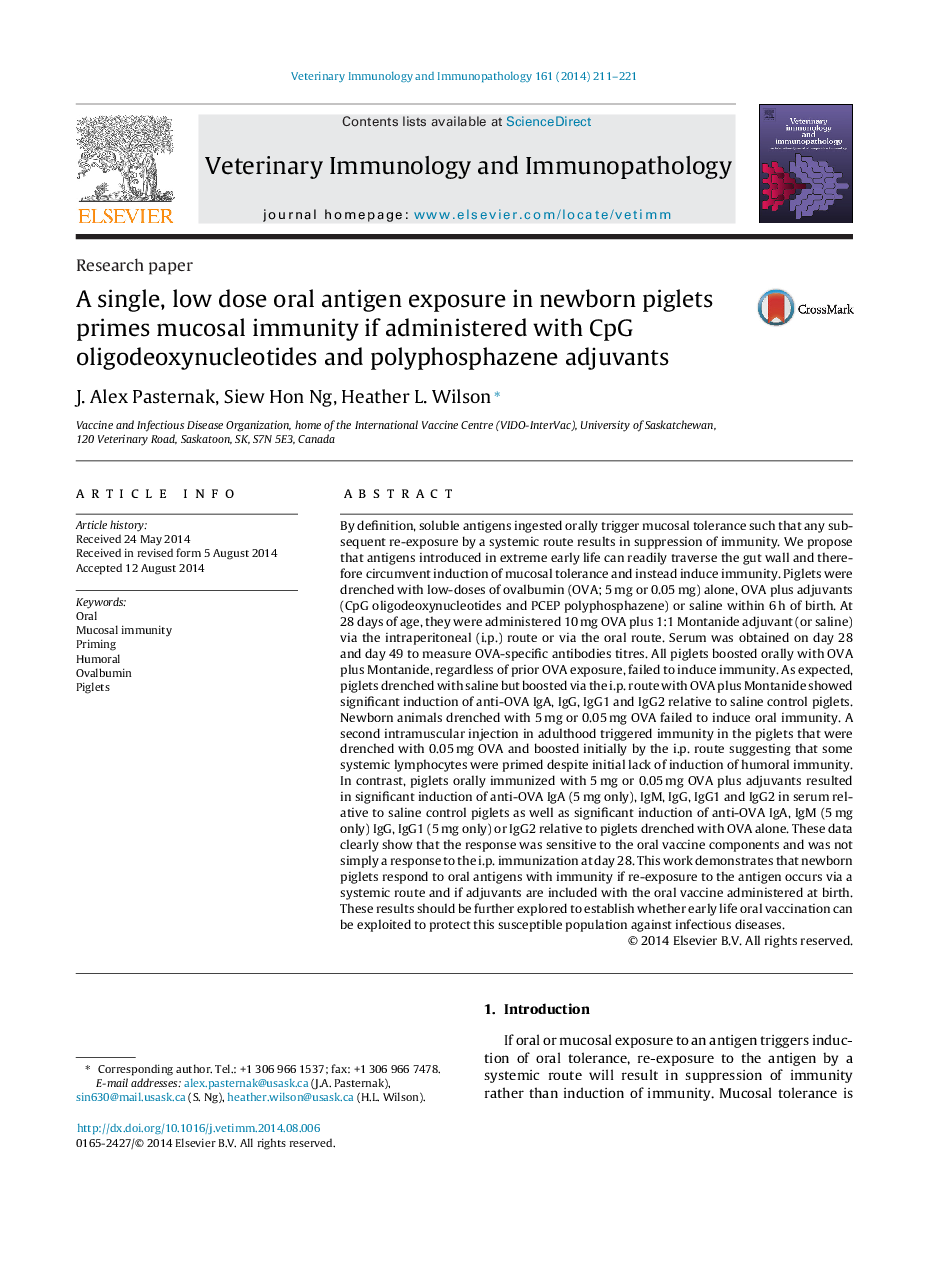| Article ID | Journal | Published Year | Pages | File Type |
|---|---|---|---|---|
| 2461508 | Veterinary Immunology and Immunopathology | 2014 | 11 Pages |
•Neonatal piglets drenched with ovalbumin alone fail to respond to oral booster immunization with immunity.•Neonatal piglets drenched with ovalbumin respond to repeated systemic immunization with humoral immunity.•Oral drench with ovalbumin, CpG oligodeoxynucleotide and soluble polyphosphazene triggers immunity after i.p. booster immunization.•Piglets are amenable to oral immunization if adjuvants are included in the vaccine.
By definition, soluble antigens ingested orally trigger mucosal tolerance such that any subsequent re-exposure by a systemic route results in suppression of immunity. We propose that antigens introduced in extreme early life can readily traverse the gut wall and therefore circumvent induction of mucosal tolerance and instead induce immunity. Piglets were drenched with low-doses of ovalbumin (OVA; 5 mg or 0.05 mg) alone, OVA plus adjuvants (CpG oligodeoxynucleotides and PCEP polyphosphazene) or saline within 6 h of birth. At 28 days of age, they were administered 10 mg OVA plus 1:1 Montanide adjuvant (or saline) via the intraperitoneal (i.p.) route or via the oral route. Serum was obtained on day 28 and day 49 to measure OVA-specific antibodies titres. All piglets boosted orally with OVA plus Montanide, regardless of prior OVA exposure, failed to induce immunity. As expected, piglets drenched with saline but boosted via the i.p. route with OVA plus Montanide showed significant induction of anti-OVA IgA, IgG, IgG1 and IgG2 relative to saline control piglets. Newborn animals drenched with 5 mg or 0.05 mg OVA failed to induce oral immunity. A second intramuscular injection in adulthood triggered immunity in the piglets that were drenched with 0.05 mg OVA and boosted initially by the i.p. route suggesting that some systemic lymphocytes were primed despite initial lack of induction of humoral immunity. In contrast, piglets orally immunized with 5 mg or 0.05 mg OVA plus adjuvants resulted in significant induction of anti-OVA IgA (5 mg only), IgM, IgG, IgG1 and IgG2 in serum relative to saline control piglets as well as significant induction of anti-OVA IgA, IgM (5 mg only) IgG, IgG1 (5 mg only) or IgG2 relative to piglets drenched with OVA alone. These data clearly show that the response was sensitive to the oral vaccine components and was not simply a response to the i.p. immunization at day 28. This work demonstrates that newborn piglets respond to oral antigens with immunity if re-exposure to the antigen occurs via a systemic route and if adjuvants are included with the oral vaccine administered at birth. These results should be further explored to establish whether early life oral vaccination can be exploited to protect this susceptible population against infectious diseases.
